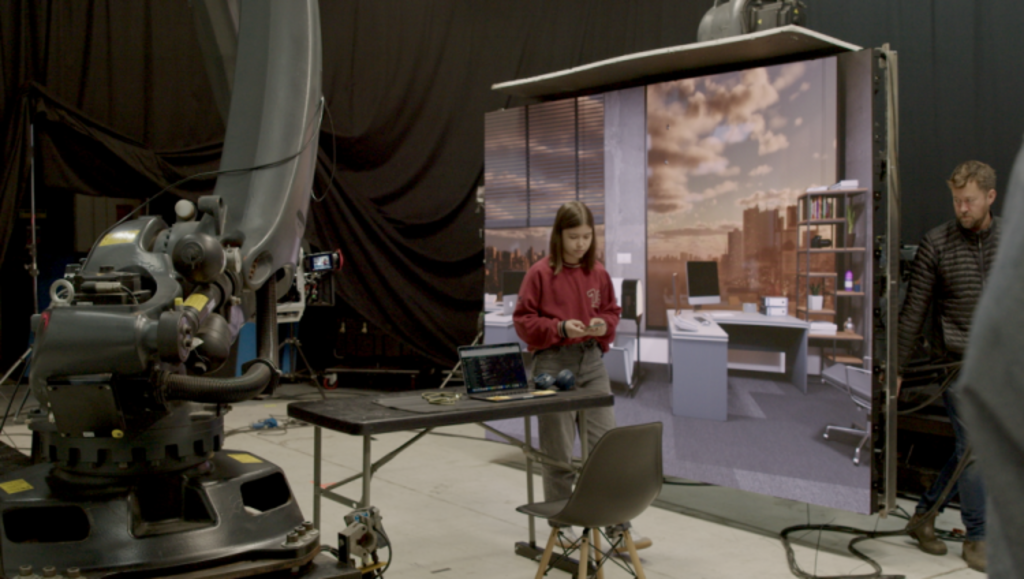Dimension has launched a virtual production system that uses robotic arms to enable real-time motion controlled VP. ViV - or Vectored Imaging Volume - has been created with the goal of allowing existing LED volume shoots to achieve ‘impossible’ shots, as well as bringing the significant benefits of virtual production to more people in an accessible way.
Developed in-house at Dimension, and conceived by CTO Callum Macmillan, ViV has been developed in partnership with industry robotics expert Dickon Mitchell. It features two robotic arms; one mounted with a camera, the other with an LED wall starting at 2m x 3m, with the option to go larger. Together, the two motion controlled components form a dynamic, LED volume, moving in precise synchronisation together with the virtual environment, in real-time. This setup allows filmmakers to shoot with a much greater range of camera motion as well as movement from performers when shooting against an LED volume.
“Filmmakers using a large, static LED volume gain so many benefits from their virtual production setup. But even so, there are often several shots that aren’t possible because of the camera movement needed to achieve them,” commented Callum Macmillan, Dimension co-dounder and CTO. “With ViV, filmmakers continue to take advantage of VP’s benefits, while also being able to achieve those impossible shots.”
The kinds of shots which fixed large-volume VP are hard to achieve include those with a large range of movement from an actor like walking through multiple locations or through doors and around corners. Or shots that require a camera to look up or down, which would usually be limited by a volume being a wall and not extending onto a floor or ceiling. By adding motion to the LED volume itself, all of those movements are now possible.

The Dimension team behind ViV has undertaken several test shoots with setups that wouldn’t be possible with a large, static LED volume. The two demo pieces - titled The Climb and The Office showcase the functionality of ViV and how the system even allows filmmakers to take advantage of higher-quality LED panels. For these two test shoots, Dimension was supported by LED partner ROE.
“Shooting with a smaller LED set up and a tighter view of the environment means processing demand is lower than a larger wall, so we can afford to use higher-resolution panels whilst actually requiring far less compute and power” explained James Dinsdale, VP supervisor at Dimension Studio. “There are several unique aspects of ViV which make it a perfect tool for existing VP shoots, but also opens up VP to media producers who until now haven’t been able to take advantage of it.”
ViV can be rolled out as a complementary set up to an existing large volume VP shoot, and used to achieve those otherwise impossible shots, but also as a standalone system. The cost and resources needed to run ViV makes it an accessible option for filmmakers who otherwise don’t need, or can’t afford, a large VP volume but have shots that would be challenging to do in-camera on location. Similarly, as online and brand content creators continue to adopt higher-end production techniques, ViV can deliver much more functionality and benefits than a green screen without needing to invest in a large volume production.